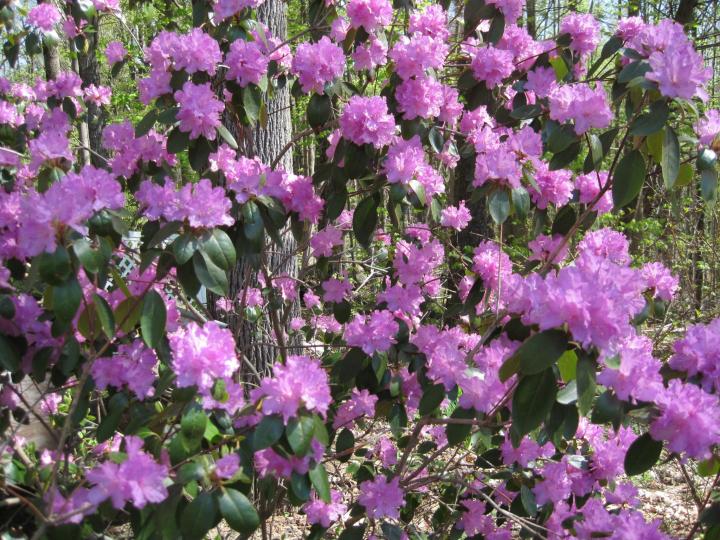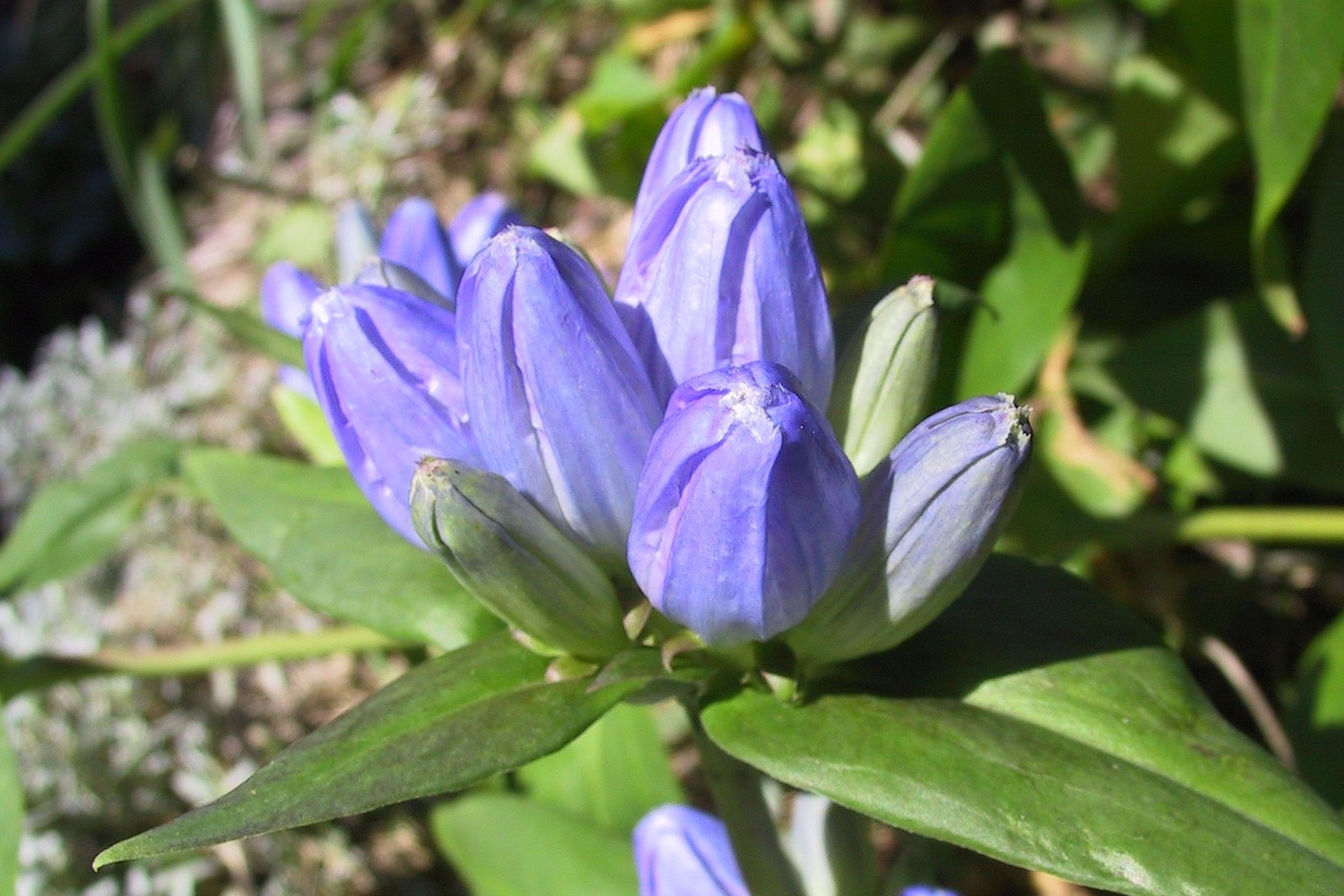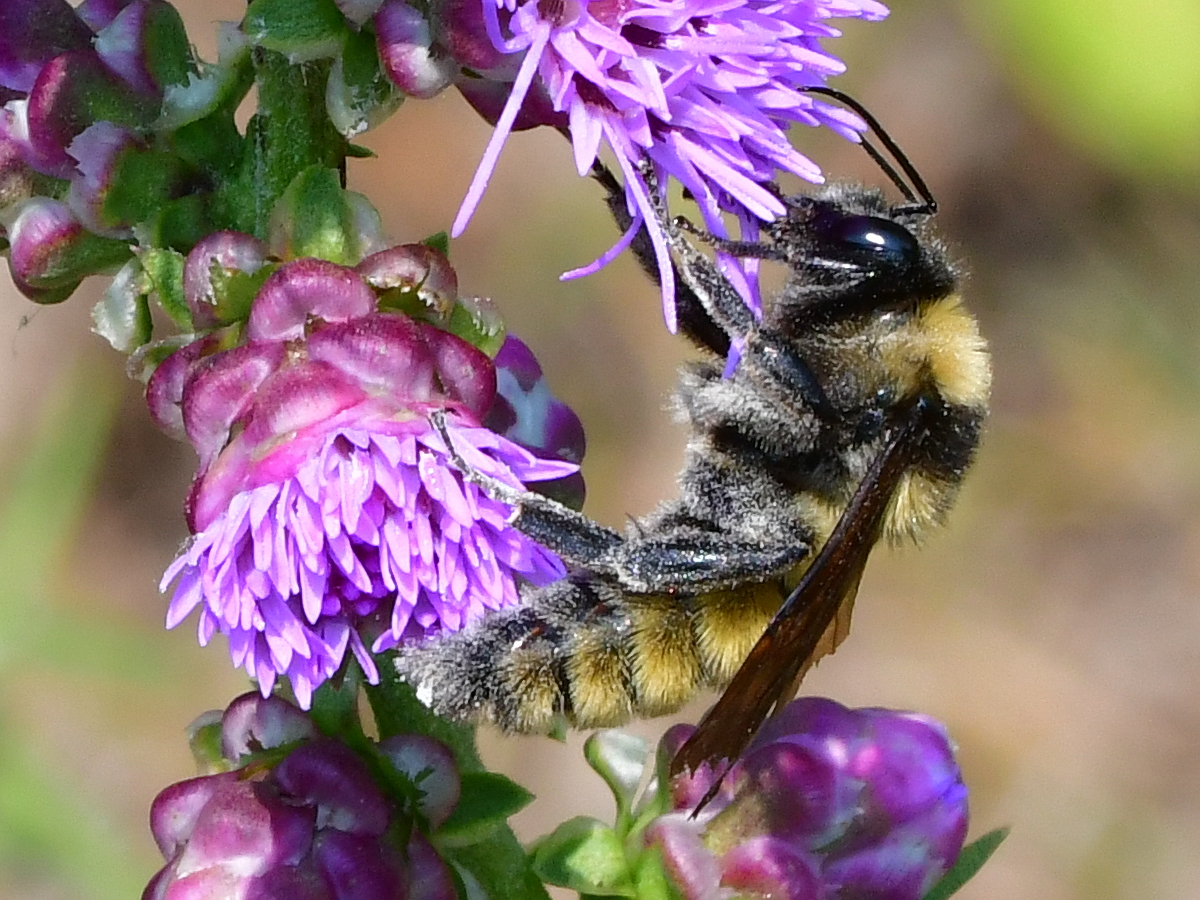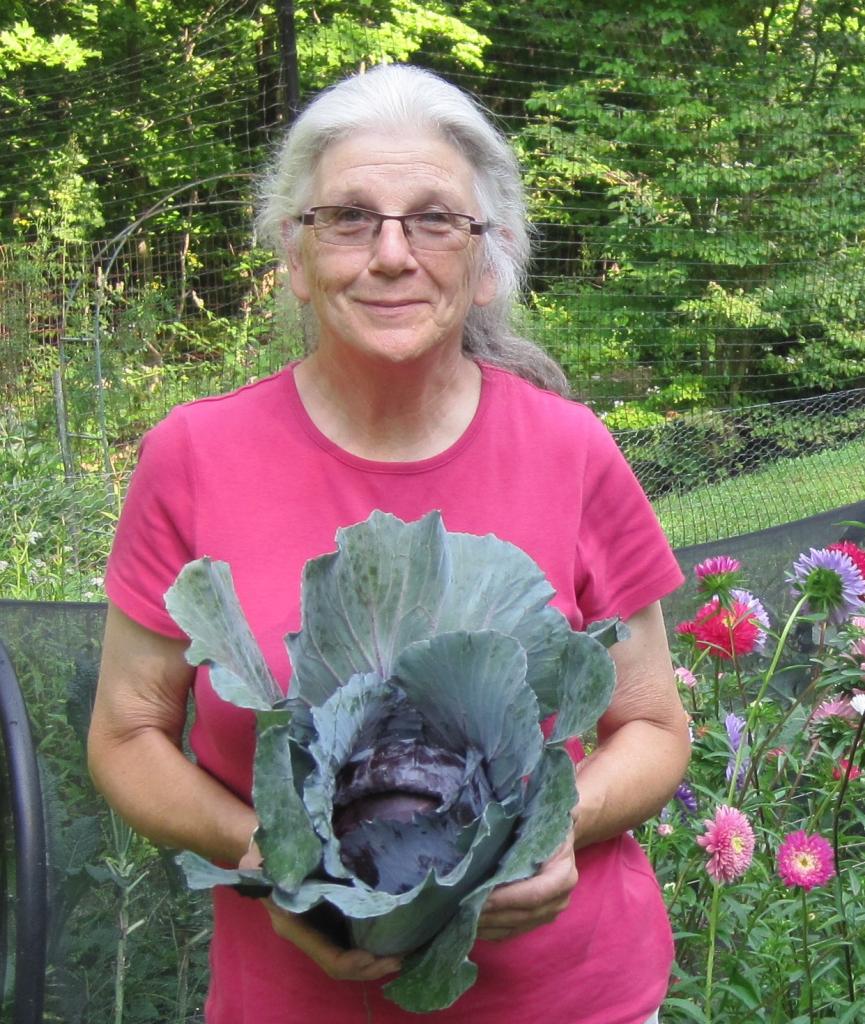
Caption
American bumblebee queen on red dead-nettle. Hanover County, VA.
Photo Credit
Louise Woodrich
Subhead
Answering Common Questions about the Humble Bumblebee
I have a problem with the bumble bees. They decided to make a nest under my ground level deck but the entrance is just below the door I use constantly. I read they don't like oil of clove so I put some on cotton and stuffed it between the deck and the door. I have had to keep adding all along the door frame as they find a new way to gain entrance. Is there a way to discourage them to move to another location as I like to be on this deck. I have lots of their favorite flowers and do not want to harm them but they need to relocate.
What a terrific article! I have had many misconceptions about bumblebees all my life. I knew I could pet them when they slept in Russian sage flowers. But i had no idea what they did with all that pollen on their legs! I didn't know they had actual nests. I thought they all hibernated and welcomed them back every spring. Now I know more! FYI, if you can plant milkweed in your yard, they will love it! The wild milkweed with large broad leaves and balls of fragrant flowers is the most attractive. If you are lucky (which we aren't any more here in Baltimore), monarch butterflies will lay eggs on your milkweed and their life cycle will continue as well.
I got attacked by bumble bees, so they are not friendly.
MANY years ago as I was sitting on the grass, enjoying my lunch hour in a rather warm-but-not-hot courtyard (end of summer) - WHAT did I espy but a fuzzy bumblebee with its tongue/proboscis out, panting, walking in the grass towards me. Realizing that end of summer means - them bumbles will eventually diiie, (😰boohoo!!). I gently picked it up and put it under the shade of a nearby bush -- I poured a little water on top of the nearby grass so it could drink if it wanted too. ***THEN -- my lunch hour was almost over and I had to get back to my authoritarian boss -so- wishing Sir B. Bee the best, I got up to leave...and I saw...yes!! ANOTHER bumblebee in the Same Predicament staggering my way in the grass-- perhaps that bush area was near/at their underground home? So I did the same with this bee and, sad to part with them, I wished them the best. Yet Another time I was enjoying the serene flowery beauty of my bldg's rooftop garden when a Monarch Butterfly madly sped from behind a rose bush with a Bumble Bee chasing after it ("get away from my pollen!" ???)
I love bumble bees,(Mr Bumbly),many times I have held a bumble bee in my hand and strokes it,s soft furry body,I am now 81 and I brought up all my younger family members to also respect bees.But I told them if it,s a wasp or a yellow jacket not to swipe just get out the way fast because they can,t win against them. Bees are gentle.
N
Nanking Cherries & Rose of Sharon! Each year I see Bumbles loaded with pollen on ours. The Nanking is an early Spring bloomer & all types of bees are attracted to them. The Rose of Sharon however gives them so much more pollen that they look more like "Flying Yellow Cheese Balls." I walk right up to them. They could care less about me being there as long as I am simply observing them.
Beware of coming unexpectedly to a bumblebee nest. One day I went into my rabbitry and noticed all the rabbits were sitting way back in their cages and being quiet. I walked thru the aisle and discovered at the end on the sliding doors that under the insulation was a bumblebee nest, and part of it had fallen to the ground due to weight. The bees were swarming one in particular, a very large bee came straight at me. I ran back thru the aisle and out the side door. The bee followed me clear out to the front yard. It stung me 5 times on my arms before it flew off. I am afraid I had to spray and destroy the nest as it was presenting a danger to people and the rabbits. I felt bad about this, but there was nothing else that I could do that I knew of at the time.
I always had bumble bees around the house until we had vinal siding put on.
Also I notice wood peckers drilling out their homes in the garage wood over hang. That they used for years. There are not as many as there use to be here.
I think you are talking about carpenter bees which bore a hole in wood to lay eggs inside .
These are solitary bees.
Bumble bees nest together with a queen and workers.
I have bumbles that drill right into my eaves.
- « Previous
- 1
- 2
- …
- 10
- Next »












Comments